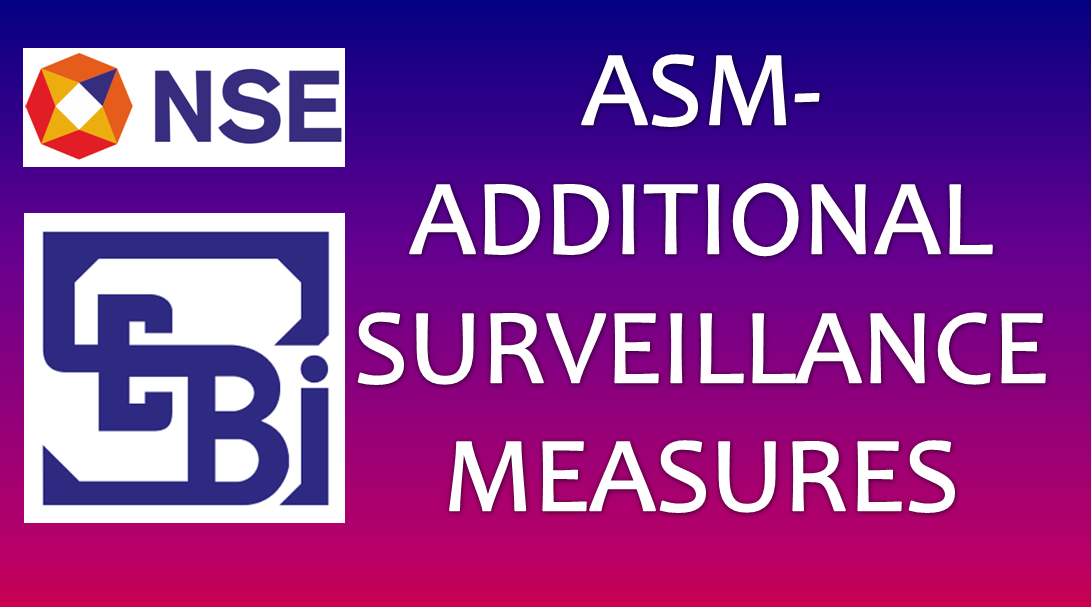Keep Calm! Get the latest Updates on ASM (Additional Surveillance Measures) introduced by SEBI and the Exchanges.
Many investors have recently found their stocks listed under Something called the “ASM.” What is the meaning of ASM? Is there a cause for concern? Lets explore!
SEBI, the stock market regulator along with the exchanges has re-introduced a framework for monitoring of stocks that are undergoing Insolvency resolution / capital restructuring proceedings. This framework is called Additional Surveillance Measures (ASM full Form), or ASM Framework. It is NOT an adverse action against those stock which are listed under ASM. The purpose for this is to remind investors and other market participants of the best practices while dealing with these stocks. ASM was first introduced on March 2018 vide this circular. The Latest ASM lists are updated according to the latest ASM Framework {Circular number NSE/SURV/48506, June 04, 2021.} We will discuss its implication here.
What to do if and Investor owns a Stock Under ASM? Is it an adverse action against these Stocks by the regulators?
It is NOT an adverse action against these Stocks by the regulators. This has been clearly conveyed by NSE in its Details. Nevertheless, SEBI and exchanges reminds investors to analyze and research well while choosing to invest among these stocks. The circuit limits of these stocks shall be within 5% and margin requirement will be 100%. Which means volumes on these counters can get impacted. So it means limit your exposure as a percentage of your total portfolio.
What are the criterion which are used for shortlisting?
The following parameters will be monitored while shortlisted stocks under ASM (Additional Surveillance Measures):
- High Low Variation
- Client Concentration
- Close to Close Price Variation
- Market Capitalization less than 500Cr
- Volume Variation
- Delivery Percentage
- No. of Unique PANs
- PE
What is the ASM List? How to understand it?
There are two kinds of ASMs – Long Term ASMs and Short Term ASMs – The ones which are in the short term ASM will be under monitoring for around 2 weeks & if within that time they do not attract the long term ASM criteria then they will be given a clear exit from ASM stagewise . On the other hand if by that time they have to enter Long Term Version of ASM then there will be a 90 day surveillance. Post that if the stock stabilizes (Beta, Volatility etc) or the fundamentals change then there will be an exit given. Exit will happen stagewise as defined by NSE in the Detailed Sheet.
There are SEVEN Criteria for selection of stocks in the Long Term ASM Framework And in this, Stocks will be categorized into four stages from I to IV depending on the level of volatility. And similiarly for Short Term ASM selection there are certain other parameter levels divided into 2 Stages. For both Short Term and Long Term ASM stocks there will be given stagewise exit after surveillance period provided they fulfill the exit criteria. Stages have been defined clearly in the detailed FAQ Sheet. Check the link below.
All the DETAILS about ASM Criteria and Entry/Exit parameters has been shared by NSE in a Single Report. All actions taken pertaining to ASM Shortlisted stocks can be found here. There is nothing to be panicked about. If one has analyzed the stock well and is clear about he prospects one should invest. It is just that one has to limit exposure to reduce the portfolio risk/Volatility: Click to Access the details (NSE ASM FAQ Sheet)
Remain Updated on the ASM lists and download CSV/Excel File of the same by clicking here.
[You can Now create Your own Portfolio guided by our proprietary Analytics which will give your portfolio a clear edge in Performance. JOIN NOW!]


Leave a Reply